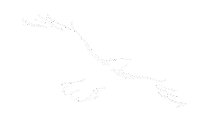Three to four
thousand years ago hunters of the Desert Archaic Culture constructed and
left animal effigies in red wall limestone caves of the Grand Canyon in what
is now California, Nevada, Utah, and Arizona. Some of the effigies give the
appearance of bighorn sheep and some that of mule deer, both animals still
very common in the Grand Canyon today. These animal effigies are usually
constructed using a single willow twig or cottonwood that has been split for
most of its length and then bent and twisted to form the effigy. Following a
ceremony, the shapes were placed beneath a cairn in the back of a cave The
greatest concentration of these rare sites has been found in the Grand
Canyon where at least five figurine-bearing caves have been located.
The peoples that made these little
animal effigies were part of the Desert Culture, the forebears of the “Anasazi”
culture which occupied the Canyon after them. Modern Puebloan descendants of
the Anasazi, including the Hopi have asked that the term “Ancestral Puebloan”
be used instead of “Anasazi.” Anasazi in Navajo means "enemy ancestor" or
"ancient people who are not us." 
These people dominated the area for over
6,000 years living among and hunting the megafauna of the time. These
animals included the bison, mammoths, the stag moose, mastodons, giant
beavers and huge ground sloths. So many split twig animal effigies have been
found (first in 1932) that they are no longer collected by museums.
Interestingly, there are usually little
or no associated cultural remains at most of these sites. Some figurines
contain a piece of deer or sheep scat in the body section, seemingly to
increase the validity of the effigy by incorporating material from the
animals or animals being represented by a willow twig or agave spine. These
findings have led to a general consensus that the caves were probably
shrines where hunters from the latter part of the archaic period practiced a
form of hunting magic by construction and ritually “killing” representations
of the deer and sheep that were an important part of their food base during
that period.
 More recently the
split-twig animal effigies have become a symbol of human interest and
fascination with the Grand Canyon. These animal effigies are made in the
same manner as those found by archaeologists, that is by splitting a single
willow twig and bending it to form the effigy. Those used in the necklaces
are a bit smaller than the originals and all have been stabilized with
polyurethane, but like the originals each is unique and a faithful
reproduction of the earliest religio-artistic objects found in the
Southwest.
More recently the
split-twig animal effigies have become a symbol of human interest and
fascination with the Grand Canyon. These animal effigies are made in the
same manner as those found by archaeologists, that is by splitting a single
willow twig and bending it to form the effigy. Those used in the necklaces
are a bit smaller than the originals and all have been stabilized with
polyurethane, but like the originals each is unique and a faithful
reproduction of the earliest religio-artistic objects found in the
Southwest.
Bill Ott has devoted his life to
photographing the rock art of the Southwest, retouching it to return it
photographically to its pre-vandalization splendor while retaining its
authenticity. His awesome photography captures the art and mystery of these
ancient peoples with a purity of intent and practice.
While on his arduous journeys to the
sites, he creates split-willow animal effigies as a pastime. As a result of
making thousands of animal effigies, he has mastered the craft while
remaining true to the original technique. He has departed from the tradition
only in that he sometimes mounts them in a serpentine rock base and he never
places them beneath rock cairns at the back of Grand Canyon caves. Bill
creates museum-quality animal effigies that you can purchase in our Seventh
Fire Store.
My people, the Anishinabeg, were known by these people
because the medicine men of the Mide lodge would travel through the spirit
world and appear through the walls of the kiva to attend celebrations and
ceremonies with the Hopi ancestors. In the 1980's an activist from the White
Earth Reservation in northern Minnesota told me of his meeting with Hopi
people who said, "Oh, yes. Many stories have been told of Anishinabeg
visiting us. They would drum, sing, and dance with us and then leave as
abruptly as they came."


 Maritime
Pine Pycnogenol
Maritime
Pine Pycnogenol
 Get
a course to promote your business online, explode your sales
Get
a course to promote your business online, explode your sales Get
software to promote your business online in less time
Get
software to promote your business online in less time Get
software to streamline your business and run it hands free.
Get
software to streamline your business and run it hands free.
 More recently the
split-twig animal effigies have become a symbol of human interest and
fascination with the Grand Canyon. These animal effigies are made in the
same manner as those found by archaeologists, that is by splitting a single
willow twig and bending it to form the effigy. Those used in the necklaces
are a bit smaller than the originals and all have been stabilized with
polyurethane, but like the originals each is unique and a faithful
reproduction of the earliest religio-artistic objects found in the
Southwest.
More recently the
split-twig animal effigies have become a symbol of human interest and
fascination with the Grand Canyon. These animal effigies are made in the
same manner as those found by archaeologists, that is by splitting a single
willow twig and bending it to form the effigy. Those used in the necklaces
are a bit smaller than the originals and all have been stabilized with
polyurethane, but like the originals each is unique and a faithful
reproduction of the earliest religio-artistic objects found in the
Southwest.
